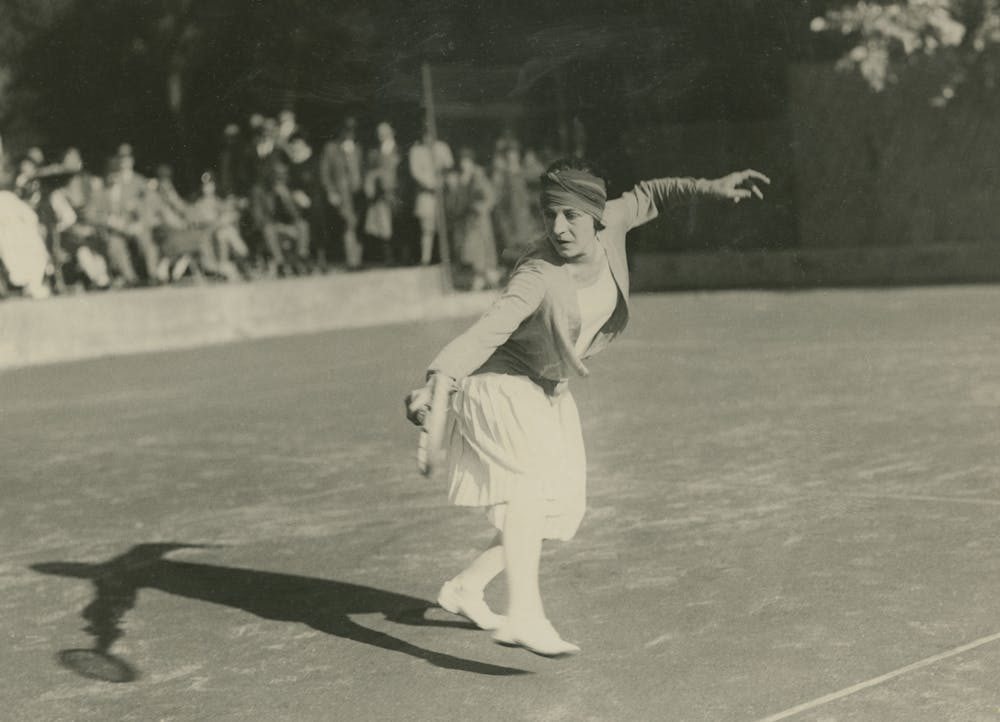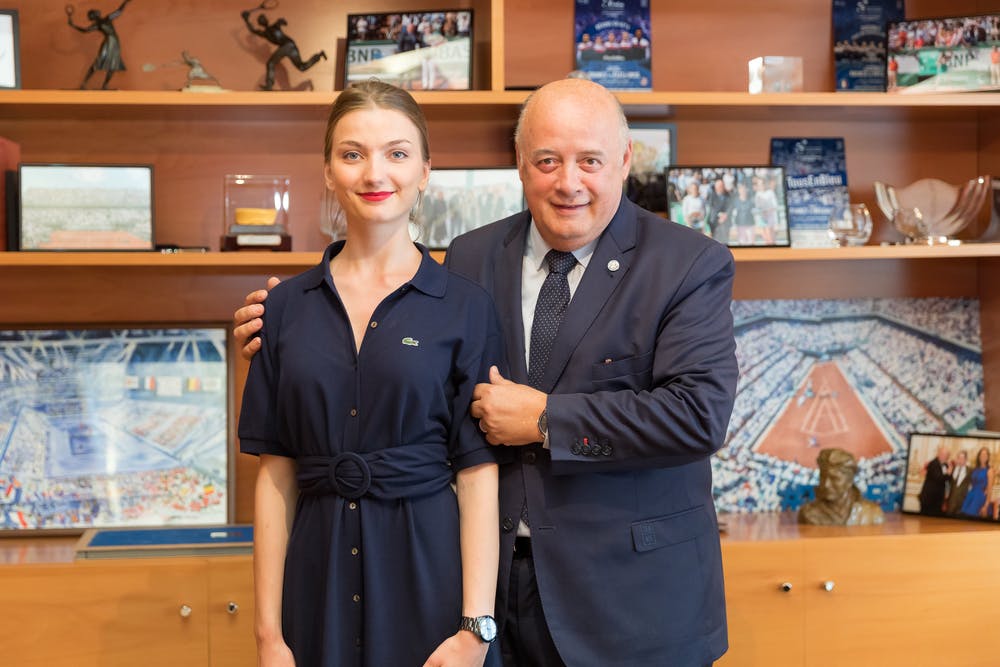READ MORE
Kvitova out but Garbi and Sloane march on

Suzanne Lenglen 'returns' to Roland-Garros, the on-court 'doctor' and the magnificence of Court 7.

The team from rolandgarros.com has been chatting to Suzanne Lenglen. Fear not, far from being deep in our glasses of rosé, or attending a séance, or eccentrically addressing the statue of La Divine outside the show court named in her honour. Rather, we have been catching up with a student who is working as a host on Court Philippe-Chatrier and who just happens to have the best possible name for welcoming VIP guests to Roland-Garros.
When Suzanne Rose Lenglen, a 20-year-old interior architecture student from Lyon, applied to work at the 2018 French Open, the immediate response was “Is this a joke?”.
“When you apply, there are three castings, and at the first one, everyone asked if this was a joke?” she laughs. “Next question was, are you related to the family of Suzanne Lenglen?”
The answers were “no” and “we are not sure”, and nor was she was named in tribute to the legendary athlete and fashion leader, dubbed “La Divine” by the French press in the 1920s. “My father’s family name is Lenglen, and my mother likes traditional names. My brother is called Félicien, my sister Eugénie, and my mother always wanted a daughter called Suzanne. It was not inspired by a love of tennis. They thought it was funny, but nothing more.”

As she goes about her job, looking as elegant as her namesake in a long navy-blue Lacoste buttoned and belted polo dress, she admits it is disconcerting to hear her name reverberate around the grounds. “It is a bit weird,” she says. “Every day the name on my security pass prompts a funny conversation. In my real life, away from here, it’s mostly my professors who remark on the association. I remember a few years ago, some friends called to tell me my name was on the TV screen. What?! I switched it on to see it was an item about the Court Suzanne-Lenglen.”
Imagine the fun of having a championship phenomenon and theatrical personality as a namesake. Lenglen won a total of 34 titles in singles, doubles and mixed doubles at Wimbledon and Roland-Garros and used to arrive on court in fur coats; she wore a scarf to hold back her bobbed hair, painted her nails and wore red lipstick. She broke tradition too in not wearing a corset, trimming her silk tennis dresses above her calf and displaying bare arms.
Suzanne embraces the myth – “I love the fact she often won sets 6-0, I love her character and her distinctive saut or jump” – but she has not been tempted to toss sugar cubes soaked in brandy or cognac at the guests she looks after, as her namesake's father used to do to keep her refreshed between sets.
Is there a doctor in the house? Yes, none other than the No.31 seed lining up against Madison Keys in the last 16: Dr Mihaela Buzarnescu. The Romanian, also known as the Late Bloomer, courtesy of being the oldest Top 100 debutant for more than 10 years when she broke through in October 2017 at the age of 29, holds a PhD in sports science from the National University of Physical Education and Sport in Bucharest.
Having embarked on academic pursuits to distract herself when recurrent knee issues prevented her from putting her junior promise to the test at Tour level, Buzarnescu is doing her career in reverse – graduating into a top-flight player and beating many people’s favourite for the title, Elina Svitolina, at the age of 30.
“I thought I had to keep my time busy with something otherwise I will go crazy thinking about how I can't play tournaments,” she said soon after her break into the Top 50. “I had two surgeries. Nothing worked. I went to Nadal's doctor, I saw a doctor in Switzerland. They were so confused about the pain. I still had pain after the surgeries and I was, like, there's no way I'm going to play tennis again. It was horrible. I was 24 and never got to go higher than No.140 in the world. I felt my tennis was done. So I started doing a PhD because I had to do something. I thought maybe I'll have a job at a university afterwards. My specialization was tennis, my masters was in sports management, and my PhD was in sports science.”

Giant jars of Nutella on crepe stalls, ball kids in terracotta T-shirts that blend harmoniously with the courts, the overhead TV camera that flies over Courts Suzanne-Lenglen and Philippe-Chatrier casting the shadow of the an A380 plane on the clay. These are Roland-Garros features that appeal to newcomers, and, as of 2018, so does the gem that is Court 7.
Located between the two main playing arenas, in front of the new Village which is home to the 400 officials and 250 ball kids, this is a mini show court with a variety of viewpoints. As well as 1,500 seats, it provides a tangible audio-buzz on the corner of the boulevard-style walkways called Grande Allée Marcel Bernard and Allée du Village. The buzz invites curiosity, especially when you look up and note the terraces of the new Village building are full with wrapt spectators enjoying the aerial view of – as it turned out Lesia Tsurenko of Ukraine trouncing No.19 seed Magdalena Rybarikova.
Fans flocked to find seats for the intriguing match that would determine whether the 22-year-old German Maximilian Marterer or the veteran lucky loser Jurgen Zopp would make headlines with their advance to the fourth round. It also offered a key destination for Australian fans, keen to see whether Daria Gavrilova would fare better than her compatriot Sam Stosur when she faced Elise Mertens of Belgium.
In the end, Gavrilova would follow Stosur into the also-rans at this year's tournament, while Marterer's dream debut at Roland-Garros continues - though his semi-charmed award for victory is a showdown with 10-time Roland-Garros champion Rafael Nadal.